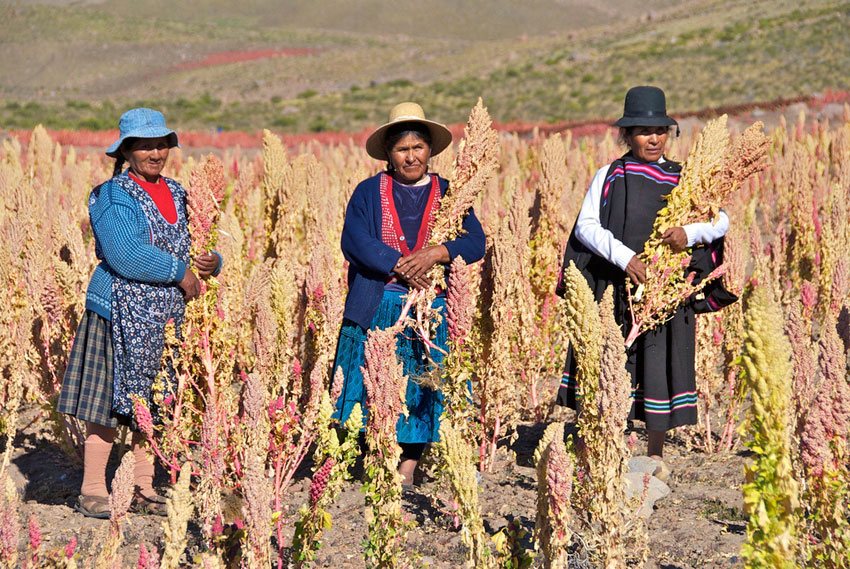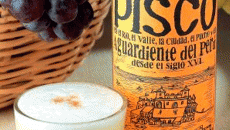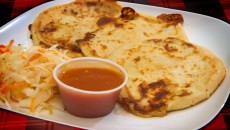By W. Alejandro Sanchez
COHA
Bolivia has accomplished a major victory in its quest to consolidate itself as the world’s most-renowned producer of quinoa. In late August, the Andean Community, a South American bloc, recognized the miracle grain as being Bolivian in origin. This recognition will aid the government’s and local industries’ international marketing campaigns.
In spite of the world becoming increasingly inter-connected, it remains important for a nation’s pride to have a local, popular commodity be internationally regarded as originating from a specific country.
Bolivia’s quest to be recognized as the birthplace of quinoa is not the sole case of a nation trying to gain recognition as being the point of origin for a priced commodity or dish. Several other Western Hemisphere nations are also in discussions over where popular foodstuffs or dishes originate from. While these culinary disputes will not end in an armed conflict, they nonetheless could exacerbate inter-state relations, which, in some cases (i.e. Peru and Chile) are perennially being tested.
Bolivia: Quinoa-R-Us
Bolivia is currently the world’s major producer of quinoa, a grain which has become a staple of healthy lifestyles in the developed world, for its pleasing taste and nutritive qualities. By the end of 2013, Bolivia was producing 46% of the world’s quinoa, followed by Peru with 30% and the United States with 10%.
The Bolivian media has reported in several departments, particularly in Oruro and Potosí, more than 150,000 hectares are currently dedicated to growing quinoa. Nevertheless, one problem that has arisen due to the high domestic as well as international demand is that the inhabitants of the aforementioned regions are now confronting each other over areas (specifically an area known as Chuta Vinto) that can be used to grow quinoa.
Tensions between Bolivian departments aside (though this is a major issue that deserves more research), it is no surprise that the Andean Community has supported Bolivia’s claim on quinoa, as the Bolivian government has actively worked towards this goal. 2013 was labeled as “The International Year of the Quinoa,” and the Bolivian government spared no expense to make sure that the grain and Bolivia were used in the same sentence.
For example, in December 2013 an International Symposium on Quinoa took place in the Bolivian city of Oruro. President Evo Morales and the Director of the Food and Agriculture Organization of the United Nations José Graziano da Silva attended the symposium in order to add a VIP-pedigree to the event.
Several of Bolivia’s neighboring nations are major quinoa producers, specifically Peru. In fact, Milton Von Hesse, Peru’s Minister of Agriculture, declared in September 2013 that Lima’s goal is to surpass Bolivia by 2016 as the world’s largest producer of quinoa. Other countries, like Ecuador and Chile, also produce quinoa, and strains of the grain also can be grown in the U.S. and the U.K.
With so many nations growing their own varieties of quinoa, it makes sense that the Bolivian government wants the world to know that the grain originally comes from this landlocked state. Therefore, it is an important victory for La Paz that the Andean Community’s members (apart from Bolivia, the other members are Colombia, Ecuador and Peru) recognized its claim regarding the grain. It was registered as “Quinua Real del Altiplano Sur de Bolivia” by Bolivia’s National Service of Intellectual Property (SENAPI) before the Community.
On the other hand, it is worth stressing that it is bizarre that Lima supported La Paz’s claims, given the previously mentioned declarations by the Peruvian government that it plans to surpass Bolivia as the major producer of the grain. Victor Hugo Vasquez, Bolivia’s Deputy Minister for Rural Development, has declared that “the next challenge is to get the same declaration of origin from the European Union. We are working on that.”
It has yet to be seen what extent President Morales will use this diplomatic victory throughout his re-election campaign as Bolivia will stage general elections on October 12. While the incumbent head of state is generally expected to be re-elected, it would not hurt Morales’ image to highlight how under his administration quinoa has become a major producer of jobs in Bolivia as well as revenue from abroad, not to mention national pride.
Peru and Chile: Inter-State Strife and Culinary Tensions
In some instances, a dispute over one commodity has been aggravated by inter-state disputes. Case in point is the tensions between Peru and Chile, which dates back to the 19th century’s War of the Pacific. Over the years, the Council on Hemispheric Affairs has repeatedly analyzed episodic Peruvian-Chilean tensions, including a conflict that almost happened in 1975 when the Peruvian military government planned to attack Chile in order to regain the territories that were lost during the aforementioned war.
In recent years, both countries have embarked on major purchases of military hardware. Most notably, Chile purchased used F-16 warplanes from the Netherlands as well as Leopard tanks from Germany. Meanwhile, Peru bought four Lupo-class frigates from Italy and this past June the Peruvian Navy sources announced they had purchased a logistical vessel, the ‘Amsterdam,’ from the Netherlands.
While the two nations have strong commercial relations, there are ongoing disputes. On January 27th of this year, the International Court of Justice ruled on a long-standing maritime border dispute between the two countries. While the ruling, has hopefully put an end to the maritime claims, the two nations still are engaged a territorial dispute, namely a land triangle composed of roughly 37 thousand square kilometers along the two countries’ coastal border.
The dispute over the triangle (known in Spanish as the “triángulo terrestre”) recommenced in August when, during a ceremony, Peruvian President Ollanta Humala displayed a new decree that confirms Peru’s new maritime border with Chile, namely the recently acquired maritime territory gained via the ICJ ruling.
The land triangle continues to be displayed as being under Peruvian jurisdiction. Santiago responded by sending two communiqués to protest the map, with Chilean Minister of Foreign Affairs Heraldo Munoz declaring that the map “adds tensions and adds a negative element” to bilateral relations.
The tensions that have historically affected Peruvian-Chilean relations must be properly discussed in order to put in proper context the disputes between the two countries over foodstuff and national dishes.
There are two products that are worthy of being highlighted. First of all, the two countries argue over the origins of the potato.
Peru is known for producing hundreds of types of potatoes, a staple of its natural diet, and the country also claims that the potato originated in its Southern highlands. This claim received important scientific support in 2005 when a team “led by a US Department of Agriculture potato taxonomist stationed at University of Wisconsin-Madison for the first time demonstrated a single origin in southern Peru for the cultivated potato.”
On the other hand, at one point over the last decade, however, Chilean officials argued that “99 percent” of all types of potato come from Chile. Debates regarding where the potato originates broke out again in 2006, when a Chilean academic wanted to register types of potatoes grown in Chiloé, a Chilean island, as an important part of Chile’s national patrimony. This provoked a strong reaction by the Peruvian government, which declared that the potato is Peruvian “and hence it is part of Peru’s national heritage,” said the then-Minister of Foreign Affairs, Oscar Martua.
A second major point of debate between the two South American countries is the ownership of pisco, a popular alcoholic drink made of grapes. Peru claims that the drink originated in the town of Pisco, located south of Lima. A Peruvian website, aptly called Piscoesperu.com (Pisco is Peru), explains that the name pisco comes from the Quechua word “pisko” which means “bird.”
“Pisko” was used by the Inca Empire to refer to the valley where the modern-day city of Pisco is located. On the other hand, Chile argues that the country established the system of how grapes were cultured in order to be distilled to create the drink. Peru gained an important victory regarding owning the trademark of pisco when, in November 2013, the European Commission granted “protection and commercialization in the [European] community market.” This decision does not ban Chile from calling its alcoholic drink “pisco” when it is sold to member-states of the European Union, but rather highlights that Peru has a special geographical connection to this name, and this can be used for marketing campaigns.
Enola Beans and Enola Beans
International recognition of a particular commodity as native of a country is a source of great national pride which is not centered solely in South America. Other countries around the world are also involved in dispute over the ownership of foodstuffs, dishes and drinks. For example, Mexico and the U.S. also have been at odds over the patent of a type of yellow bean called enola.
In 1996 a U.S. citizen managed to successfully patent in the U.S. the enola, a bean that has been grown in Mexico for centuries. However, in a landmark ruling in 2008, the United States Patent and Trademark Office (USPTO) “rejected all of the patent claims for [the enola] a common yellow bean that has been a familiar staple in Latin American diets for more than a century.”
Additionally, there are other claims between either nations or communities over traditional dishes. For example, El Salvador and Honduras dispute the ownership of pupusas, a type of tortilla stuffed with different ingredients.
The pupusa is the national dish of El Salvador, and the National Day of the Pupusa is celebrated in November. In order to increase its standing as the creator of pupusas, El Salvador cooked the biggest pupusa in the world in 2012, which was a Guiness record 4.5 meters in diameter and 13.44 meters in circumference.
On the other hand, Honduran academics argue that pupusas come from the word “pupusawa” in Nahuatl, a Central American tongue. While Salvadoran academics argue that Nahuatlwas spoken in El Salvador, giving it ownership of pupusas from an etymological point of view, Honduran academics argue that the language has also been spoken in Honduras, making the argument invalid.
This debate was accentuated in 2003 when Honduras and El Salvador negotiated the Central American Free Trade Agreement (CAFTA) with the U.S. Ultimately; Honduras declared that it would allow El Salvador to claim a patent on pupusas.
Finally, it is worth stressing that debates over ownership of dishes, alcoholic drinks or even agricultural commodities is not an issue solely for developing states. Case in point, the U.S. and Europe are currently at odds over how to label certain food products, originally from Europe that are marketed in the U.S. As an August 2014 report by the Associated Press explains,
The argument is that the American-made cheeses are shadows of the original European varieties and cut into sales and identity of the European cheeses. The Europeans say Parmesan should only come from Parma, Italy, not those familiar green cylinders that American companies sell […] And it may not be just cheese. Other products could include bologna, Black Forest ham, Greek yogurt, Valencia oranges and prosciutto, among other foods.
Conclusion
In the 21st century, nations continue to strive in their national interest to gain international recognition over the ownership of trademark agricultural goods and traditional dishes. Examples include Bolivia’s success in cornering the quinoa market, discussions between Peru and Chile over potatoes and alcoholic drinks, Honduras and El Salvador’s debate over pupusas, and the U.S. and Mexico discussing which country can patent yellow beans, are some examples of ongoing food disputes in the Western Hemisphere, and around the world.
As stated previously, while these tensions will likely not end in an armed conflict, they could exacerbate inter-state relations, particularly between Peru and Chile (which fought a war in the 19th century and continue to have a territorial dispute).
As for Bolivia, it is important that it gained support from its fellow Andean Community members (including Peru, a competitor in the production of quinoa) regarding where the highly desired and profitable quinoa actually comes from. Nobody doubts that pupusas, pisco, potatoes, quinoa and yellow beans are delicious, but while good food and alcohol can bring people together, they remain a potential source of diplomatic conflict in the 21st century.
W. Alejandro Sanchez is a senior research fellow at the Council on Hemispheric Affairs





